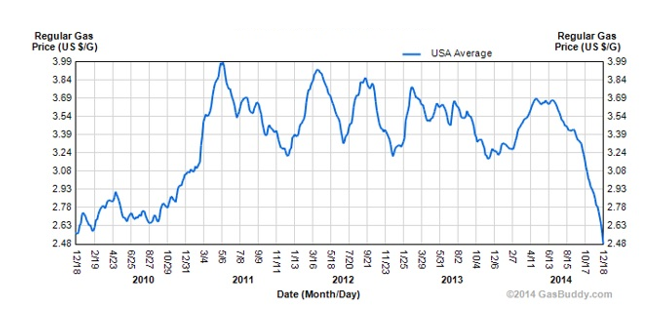The fuel surcharge was instituted a long time ago to mitigate the rising cost of fuel. It seems like the carriers are trying to figure out how to keep it alive…Hmmm. Fuel is at its lowest level since it was put into play. The carriers have developed a system to adjust the fuel relative to the market price…up and down. However, they are now tinkering with the current methodology and are planning for changes which will benefit them. In addition to fuel, most shippers spend 25-30% on assessorial fees.
There is an opportunity for the carriers to make “Competitive Advantage” changes in how this cost is covered. There are over 50 accessorial fee’s that FedEx and UPS charge. However, the fuel is the single largest charge of all of them. I believe the following options could be game changers for the industry:
There is an opportunity for the carriers to make “Competitive Advantage” changes in how this cost is covered. There are over 50 accessorial fee’s that FedEx and UPS charge. However, the fuel is the single largest charge of all of them. I believe the following options could be game changers for the industry:
1. Base Rate Adjustment: This approach would eliminate the transactional applied fuel surcharge and build it into the base rate…this is how it was originally. This base rate could be adjusted on a semi-annual basis too.
2. Discount Adjustment: Fuel can generally be estimated on an annual basis. There is an opportunity to adjust the discount level on a semi-annual basis. The carriers do not like to change the discount levels unless the account is under threat from another carrier.
3. Open Book Approach: The carrier could share their profile of the account for the added operational cost associated to a specific account and mutually build the base rate or discount to cover all cost associated with a specific client. This approach could be used primarily with National Accounts.
2. Discount Adjustment: Fuel can generally be estimated on an annual basis. There is an opportunity to adjust the discount level on a semi-annual basis. The carriers do not like to change the discount levels unless the account is under threat from another carrier.
3. Open Book Approach: The carrier could share their profile of the account for the added operational cost associated to a specific account and mutually build the base rate or discount to cover all cost associated with a specific client. This approach could be used primarily with National Accounts.
The following chart will give you a perspective of the changes in fuel prices.

As you can see, there are different options to simplify the pricing methodology for the shipper. Not to mention, their contracts will be structured in a more simple way and would be much easier to audit.
The USPS is already applying a simple rating approach. They are committed to having a simple pricing tariff with no surprises. This is being well received by the B2C shipping community and they are directing more shipments to the USPS. The Priority Mail service is delivered in 2 days with no fuel surcharge, no dims, no DAS and no residential delivery fee. A more simple pricing approach is more attractive to today’s shipper.
It is interesting that both FedEx and UPS are touting the use of electric vehicles and hybrid vehicles but there has been no reductions in cost for their use.
In the new world, we are moving towards a “Fuel Less” delivery world but is it “Foolish” for the big carriers to not change their approach for this accessorial fee?
Michael J. Ryan is the Executive Vice President – Parcel Solutions at Pro Star Parcel and has over 25 years’ experience in the parcel industry. He can be reached at 708-224-1498 or michael.ryan@prostar.com

As you can see, there are different options to simplify the pricing methodology for the shipper. Not to mention, their contracts will be structured in a more simple way and would be much easier to audit.
The USPS is already applying a simple rating approach. They are committed to having a simple pricing tariff with no surprises. This is being well received by the B2C shipping community and they are directing more shipments to the USPS. The Priority Mail service is delivered in 2 days with no fuel surcharge, no dims, no DAS and no residential delivery fee. A more simple pricing approach is more attractive to today’s shipper.
It is interesting that both FedEx and UPS are touting the use of electric vehicles and hybrid vehicles but there has been no reductions in cost for their use.
In the new world, we are moving towards a “Fuel Less” delivery world but is it “Foolish” for the big carriers to not change their approach for this accessorial fee?
Michael J. Ryan is the Executive Vice President – Parcel Solutions at Pro Star Parcel and has over 25 years’ experience in the parcel industry. He can be reached at 708-224-1498 or michael.ryan@prostar.com











